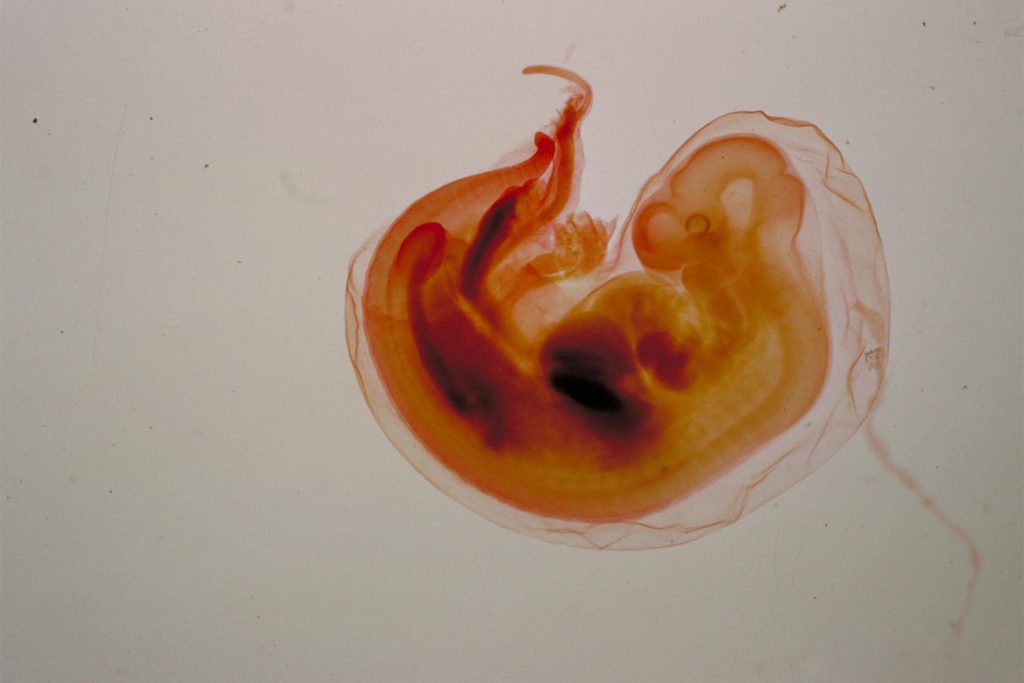24 Feb Feeding the gestating sow with phytogenics: Mechanisms of action on fetal growth and development

One of the main strategies to reduce the price of pork is to increase the number of weaned piglets per sow per year, through optimized breeding programs and genetic selection, achieving more litters and a larger number of viable piglets per litter. Attaining this goal is not always possible: a larger litter size comes with a higher percentage of small and weak piglets, which results in a surge in early mortality. Moreover, a larger litter increases the nutritional and physiological strain on the sow, negatively impacting both the current and the following reproductive cycle.
Let’s not forget that sows need to go through a series of stages to give birth to healthy piglets: they need to recover from their last lactation and get back to their normal estrus cycle; oocytes have to mature properly; ovulation and insemination must be successful; embryos should be correctly implanted, and fetuses must develop normally.
The administration of phytogenics to gestating sows
Sows experience stress during gestation, which negatively affects their general health status, the functioning of their digestive system and their reproductive performance.
Both through academic research and our field trials (2023, 2018, 2016) we learned that the administration of phytogenics to gestating sows improves the percentage of piglets born alive, the average piglet weight at birth, and piglet uniformity.
Phytogenics have antioxidant, anti-inflammatory, antimicrobial, and immune boosting activities. They exert positive effects not only on the digestive system, but on the whole body of the sow. Some are also transferred to the fetus through the amniotic fluid.
In this article, we describe the mechanisms of action of phytogenics on fetal growth and development, which result in heavier and healthier newborn piglets.
Positive action on gut health
The nutritional requirements of a pregnant sow are very high, especially in the case of hyperprolific sows. The nutritional status of the sow has a direct impact on oocyte maturation, ovulation, fertilization and fetal development.
However, the stress associated with gestation may induce digestive dysbiosis, impairing digestion and reducing nutrient use. A limitation on the available nutrients hinders fetal development, the health, and growth potential of the newborn piglets, and the performance of the sow in the following reproductive cycle.
The administration of phytogenics restores and maintains gut health, ensuring nutrient absorption and use. Additionally, phytogenics sustain a healthy intestinal flora,
preventing the overgrowth of pathogens and promoting the growth of beneficial species despite the physiological changes that take place during gestation. In several studies, a gut flora that is richer in beneficial species has been associated with sows that produce larger and healthier litters.
Promotion of feed intake during late gestation
Ninety percent of fetal growth takes place during late gestation, increasing the energy and nutrient requirements of the sows. However, during this period, stressed or constipated sows may reduce their daily feed intake, which may make it difficult to meet the nutritional needs of the sows and fetuses.
Besides hindering fetal growth, limited nutrient supply during late gestation also increases variation in fetal weights, which is translated into a poorer litter uniformity at birth. Litters with low uniformity include more low weight piglets, which show competitive disadvantages compared to their bigger littermates, lower chances of survival and poorer performance during all their life.
The addition of phytogenics to sow feeds during late gestation promotes feed consumption and prevents constipation, which is one of the main reasons for the low feed intake.
Alleviation of oxidative stress and intrauterine growth restriction (IUGR)
The genetic selection that has allowed hyperprolific sows to harbor a higher number of fetuses in the uterus has also increased the cases of piglets affected by intrauterine growth restriction (IUGR), due to the competition for limited uterine space and nutrients.
IUGR refers to the impaired growth of the mammalian embryo or fetus during gestation. It may be caused by a reduced blood flow between the uterus and the placenta, impaired angiogenesis (development of new blood vessels) in the placenta, oxidative damage, and lower levels of glucose transport. Nowadays, it is estimated that IUGR occurs in 15-25% of newborn piglets. Affected animals show a low birth, weaning, and final body weight, poor development of the digestive system at birth, weak immunity, high stillborn and mortality rates, and substandard carcass quality.
The metabolic burden of the sows during late gestation often leads to oxidative stress.
Oxidative stress is directly related to IUGR:
- It reduces the formation of new blood vessels (angiogenesis) in the placenta. Blood vessels are key for the transport of nutrients, exchange of respiratory gases, and elimination of waste substances.
- It cuts down the metabolic transport of glucose and amino acids from the sow to the fetus.
Supplementing with antioxidant phytogenics improves the oxidative status of the pregnant sow, preventing the negative consequences of oxidative stress in the placenta.
Moreover, some phytogenic compounds can reach the fetus through the amniotic fluid, relieving some of the negative consequences that the reduced blood flow has on fetal development. Piglets that are exposed to phytogenics during the intrauterine period show a better oxidative status and a healthier development of the digestive system at birth.
Pending further research work, we can hypothesize that the administration of phytogenics prevents or relieves the consequences of intrauterine growth restriction.
Conclusions
From our practical experiences and field trials, we learned that the administration of phytogenics to pregnant sows has positive effects on the sows themselves and on the health and productivity of their offspring, producing important economic benefits for the farms.
In pregnant sows, the main mechanisms of action of phytogenics are the improvement of gut health, the promotion of feed intake and the relief of oxidative stress.
Products of choice
ReproPlus© is a premix powder intended to maintain and improve digestive health in pregnant and lactating sows. It is formulated with synergistic ingredients:
- Bactericidal and fungicidal phytogenics, combined with organic acids.
- Phytogenics with immune boosting and antioxidant activity.
- Plant extracts with prebiotic effect.
- Vegetable oils rich in omega 3.
- Silicates with mycotoxin binding function.
When administered during the last period of gestation, it has a positive impact on the survivability and the health of the litter.
Do not miss any of our articles!
Subscribe to our monthly newsletter

Certain health statements may not be applicable in your region.

